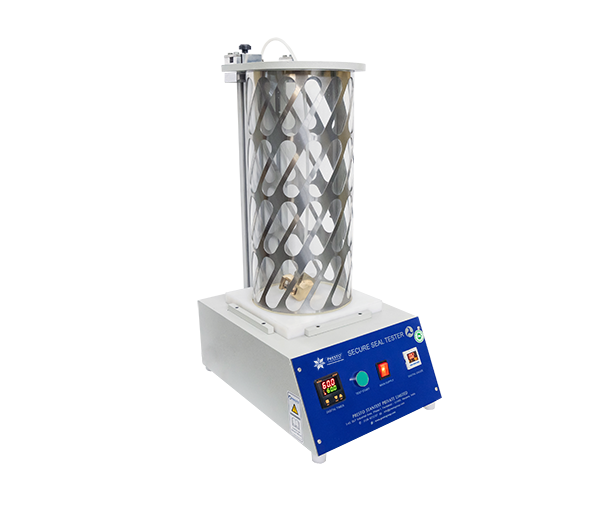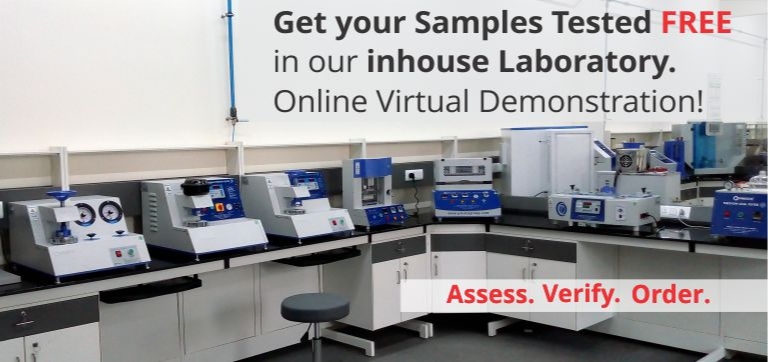Secure Seal Tester: The Future of Bottle Integrity

Gaurav Malhotra
27-11-2024
Sealing technology has become a critical component in pharmaceuticals, food and beverage, cosmetics, and many more where bottle integrity is non-negotiable. Packaging systems have become high-tech, and methods for testing seals have advanced to meet stronger demands. The secure seal tester for bottles has become an important asset in verifying the airtight integrity of containers, especially glass bottles, that pose a challenge in maintaining seal performance at variable conditions.
Basic sealing testing is pretty familiar to many, but we are going to dissect the detailed concepts of secure sealing: exploring the latest innovation methodologies that ensure technical nuance in securing every bottle. Whether it's high-pressure applications, vacuum testing, or real-time leak detection—here is a guide to the technologies that are driving the future of bottle seal testing.

Understanding Secure Seal Testing
The problem of sealing assurance is more than leak testing. Today, the increasing demand for quality packaging brings about the need for new-generation testing systems that mimic the real world with high fidelity.
Technical Specifications of Secure Seal Tester
An advanced secure seal tester for glass bottles integrates a wide range of sophisticated features and specifications to match the stringent requirements of modern manufacturing.
- Controls: Digital controls for accurate pressure measurement and variable timer setting.
- Equipment Range: The tester can withstand a maximum pressure of 220 psi (pounds per square inch).
- Test Range: The actual pressure test range for seal testing is up to 175 psi.
- Accuracy: The tester delivers accuracy of ±2% throughout the range, guaranteeing that the results are reliable and precise.
- Pressure Range (Digital Gauge): 10 bar
- Inner Diameter of testing container: 200 mm
- Timer: Digital Preset up to 999 seconds
- Material: Anodized aluminum, High Tensile Plexiglass, and Stainless Steel
- Finish: Bright chrome/zinc plating for a corrosion-resistant finish
Why Presto?
Presto's Secure Seal Tester provides assurance of packaging integrity by identifying leaks or defects in seals. Utilizing advanced testing methods such as vacuum and pressure decay, it ensures product safety and thus makes it a critical tool for industries such as food and pharmaceuticals.
The Future of Secure Seal Testing
As manufacturing demands evolve, the technology behind secure seal testing evolves too. The future of seal integrity testing will involve even more advanced sensor technologies, such as nanotechnology for ultra-sensitive leak detection and automated AI-driven analysis that will push the boundaries of accuracy and efficiency.
Manufacturers are also exploring integrated packaging systems that combine seal testing with real-time quality assurance, allowing for end-to-end monitoring from production to the shelf. The inclusion of 5G networks for immediate data sharing and cloud-based analysis will add to the precision and speed of seal testing, allowing global manufacturers to meet both regional and international standards easily.
FAQs
What is an advanced secure seal tester?
An advanced secure seal tester with a secure seal integrating sophisticated technologies such as pressure decay, vacuum decay, and real-time sensors allows manufacturers to evaluate seal integrity with high accuracy. It is capable of leak detection as low as 0.0005 ml/min and simulates real-world conditions such as thermal cycling and shock testing.
Why is Computational Fluid Dynamics (CFD) important in seal testing?
With CFD, manufacturers may simulate and predict how the seals behave under different environmental conditions without requiring extensive physical testing. It is rather valuable information, especially for the glass bottle whose seals have been affected by rapid temperature changes or pressure shifts.
How might AI assist in secure seal testing?
AI and ML can analyze real-time test data, identify patterns, and predict potential seal failure. This means manufacturers can optimize the sealing process, improve production efficiency, and prevent product contamination before it happens.
Not only will an advanced secure seal tester for bottles help manufacturers comply with regulations, but it is also a strategic step toward operational excellence and brand trust for any committed manufacturer looking to provide the highest quality product. Years from now, the secure seal tester will be even more essential in the pursuit of packaging perfection.
Phone: +91 9210 903 903
Mail: info@prestogroup.com
you may also like
- The Ultimate Guide to Lab Testing Equipment: Ensuring Quality with Precision Instruments
- GSM Calculator Guide: How to Measure Fabric, Paper & Plastic Weight
- What Is a Gloss Meter? Working Principle, Uses & Benefits Explained
- Applications of Tensile Testers in Plastic, Metal & Rubber Industries
- How UV Chambers Help Manufacturers Beat Sunlight and Weather Challenges
Recent News
- Paper & Packaging Testing Instruments
- Paint, Plating & Coating Testing Instruments
- Plastic & Polymer Testing Instruments
- Environmental Testing Chambers
- PET & Preform Testing Instruments
- Color Measuring Testing Instruments
- View Entire Range Instruments

Catalogue 2023
Get information about new product launches, research, innovation and endeavors at Presto.
download Free Copy
Get a Quote

